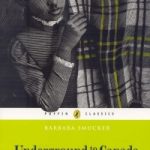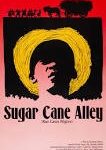Submit your book reviews to risa@cabal.org
New Ideas for Curriculum: More Books and their Insights into How to Shape Curriculum
By students of John Myers at OISE
By Subin Moon
A Concise History of Canada by Margaret Conrad reveals the detailed history of Canada to 2011. It is useful for grade 9 to 12 classes to understand the chronological occurrence of historical events and relations. Not only does the book provide different perspectives to explore different events and time periods in history, but it also provides an opportunity to students to improve their information processing: to learn more in depth by follow-up discussion, write-up, presentation, or debates. As it is a secondary source students can measure and discuss its reliability, and where and what to take on for further learning inquiries.
Also, in relation to history curriculum, students can obtain deeper understanding based on the concepts of historical thinking such as historical significance, cause and consequence, continuity and change, and historical perspectives. They can be trained to identify each of the concepts while they explore a secondary source like this book. Students can also formulate questions for self-inquiry process for applications and thinking criteria as well. The interpretation and analysis will develop their logical and critical thinking skills for long-term learning and will enable them to evaluate the information to draw reasonable conclusions. Therefore, the new scholarship can reshape the whole learning process of our students.
By Sheri Veibi
Colin Howell’s Blood, Sweat and Cheers: Sport in the Making of Modern Canada (2010, University of Toronto Press) analyzes how sports contributed to the making of the Canadian nation. Howell describes sport as a relationship between nature and animals, how we define respectability, how we build allegiance to community and nation, money and profit, and how society creates audiences and constructs heroes. A decade ago, Canada was struggling against the possibility of separation and sport was an instrument for social and moral improvement for nation building. The sporting culture that developed in Canada between Confederation and the First World War was tied to the development of Canadian cities and towns. Sports reflected their surroundings and can provide insight to the daily lives of Canadians. For example, rural sport was informal, involved animals and interaction with the natural environment. Whereas, in towns sports were organized, scheduled, team-oriented and limited by space.
I would use Colin Howell’s work to shape many of the units in Canadian History Since World War One, as it is increasingly evident that sport intersects with Identity, Citizenship and Heritage and social, economic and political contexts of Canada. I would also use sports to analyze economics in Canada, the rise of capitalism and how sports intersect with money and profit, and how sports creates audiences and constructs sport heroes. I found the analysis of sport and the body very powerful as sport constructs how the body is used, imagined, watched, disciplined and conformed to societal expectations. Therefore, sports contribute to how we understand masculinity and femininity and this can be used to compare and contrast different identities and privileges that still exist in society today. Sport as a whole is a large institution through which Canadian and individual identities are constructed and can be tied to the social, economic and political development of our country.
By Daniella Capocci
How did Canada become the country that it did? Why were we, and still are, so divided between English and French Canada? The book The Constitutions That Shaped Us, by Guy Laforest and his colleagues (McGill-Queen’s University Press, 2015), discusses the events and constitutions that helped shaped us. The main focus outlines the division between French and English Canada, and what French Canada was subjected to under British rule. Through the enactments of the Royal Proclamation (1763), the Quebec Act (1774), the Constitutional Act (1791), and the Act of Union (1840), the reader will get an extensive background of Canada’s early political history.
Instead of being a resource for one specific course, this book is useful to give any teacher insight into how more recent events occurred. Therefore, this book would be recommended for any Canadian history teacher. In grade 7 and 8, the curriculum studies events of that time, so the book could be used more as a resource, in which the teacher can then pass on knowledge to their students. In grade 10 history, this book will also help a teacher understand the division between English and French Canada, especially to create a basis for why French Canada fought so hard for their own identity. While this division is already covered, this book will help a teacher or student understand French Canada to a greater extent than what many have been exposed to, and the students can get an accurate sense of the views and experiences of French Canadians.


